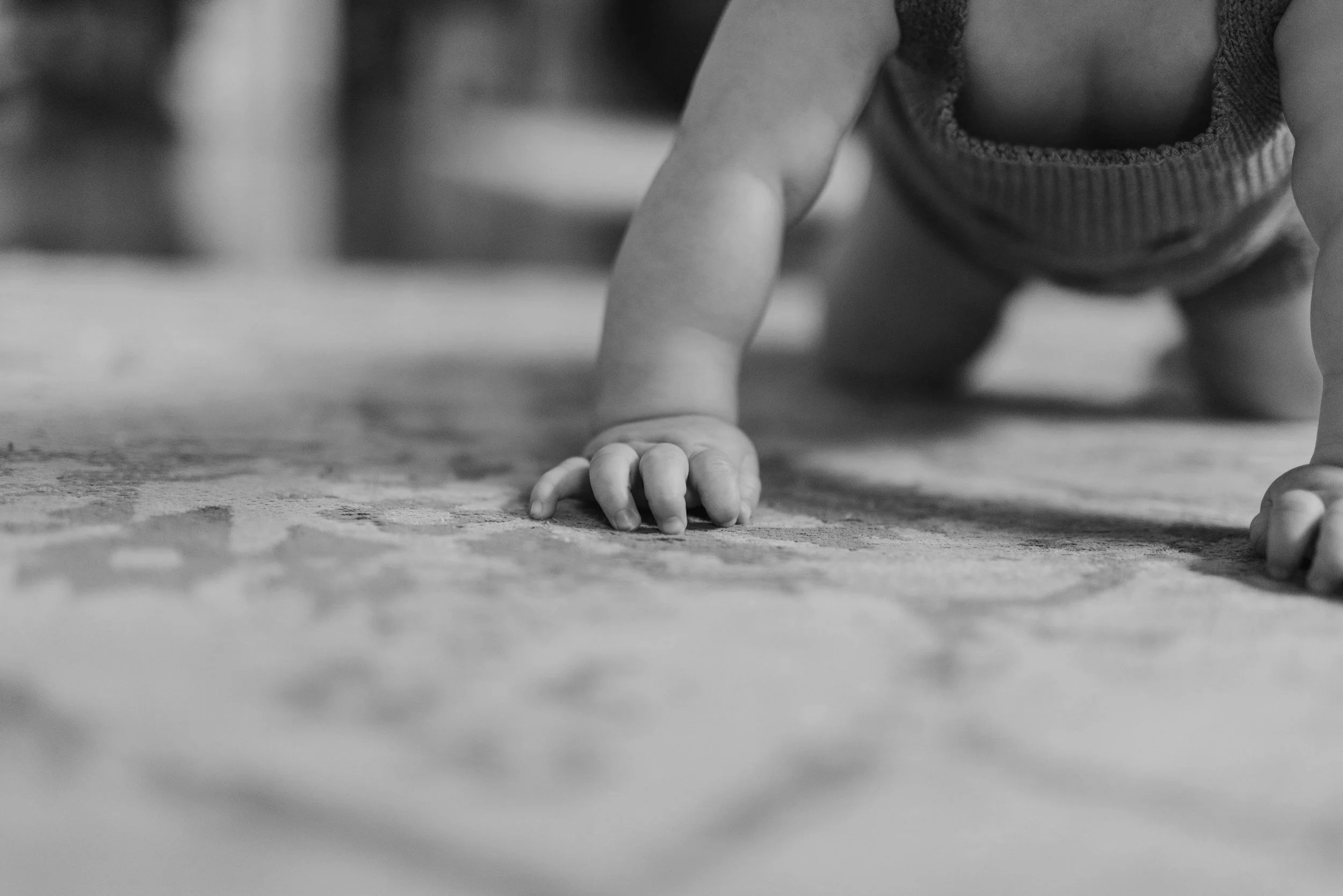Crawling 101
Why is Crawling Important for your Baby?
Crawling on all fours is one of the major accomplishments your baby should achieve during their first year of life. It is a KEY skill in their gross motor development. And remember, motor development and brain development go hand in hand!
Crawling improves grip stretch and helps develop the arches in your infants hands. It strengthens the trunk and shoulder girdle to aid in posture, handwriting, balance, and your baby’s overall body awareness.
Crawling involves coordination of the upper and lower body as well as the right and left side of the body. It helps make connections between the left and right sides of the brain which will improve bilateral coordination. Crawling also assists in visual tracking as they learn to move more and explore.
Why do some babies skip crawling?
To put the answer simply, crawling is not easy! Your baby is smart and realizes that they can achieve movement easier by using a compensation pattern or a different position all together [like standing]. Below are some of the hallmark reasons why babies skip crawling.
They have arm weakness
They have core and hip weakness
They have a visual deficit
They have muscle tightness, usually due to their uterine positioning
They don’t spend much time on the floor [container overload]
They have issues transitioning
They have low muscle tone
Standing is easier, because baby can ‘lock out’ their joints.
Quick Tips for Crawling
Keep toys 8-12 inches away from your child in sitting
For babies that are ‘stuck’ in a seated position, try placing them on their tummy.
Improve their tummy time tolerance with a stability ball
Place obstacles on their floor and make it FUN! Use pillows and couch cushions to encourage exploration.
Take off the pants & socks
Find some carpet
Place toys on the floor, especially if your baby prefers standing
Stay away from jumpers
When is it time to get help?
Like many movement milestones, it’s difficult to know when you should seek professional help. Is your baby really struggling or do they just need more time? Below are 5 signs that your baby may display when they are struggling to crawl.
At 8-9 months they are unable to play on their knees with a toy.
At 6 months they are poor at independent sitting OR they only sit in one position
At 8 months they are unable to transition in and out of sitting
They prefer to sit in a W position
At 4 months they have poor tummy time tolerance.
If any of these sound like your little one, there is no need to fret! We are here to help!!
How can we help?
If you are worried about your baby’s crawling progression or perhaps their adopted crawling pattern, we can help. At Bumps and Babes Wellness, we cater our care to the individual, so we begin by assessing your baby’s functional range of motion and their ability to transition in and out of different positions. From this, we can gain insight on what is preventing your baby from crawling! We tailor a treatment strategy which typically includes pediatric chiropractic adjustments, corrective stretches and exercises, along with an at-home program!

